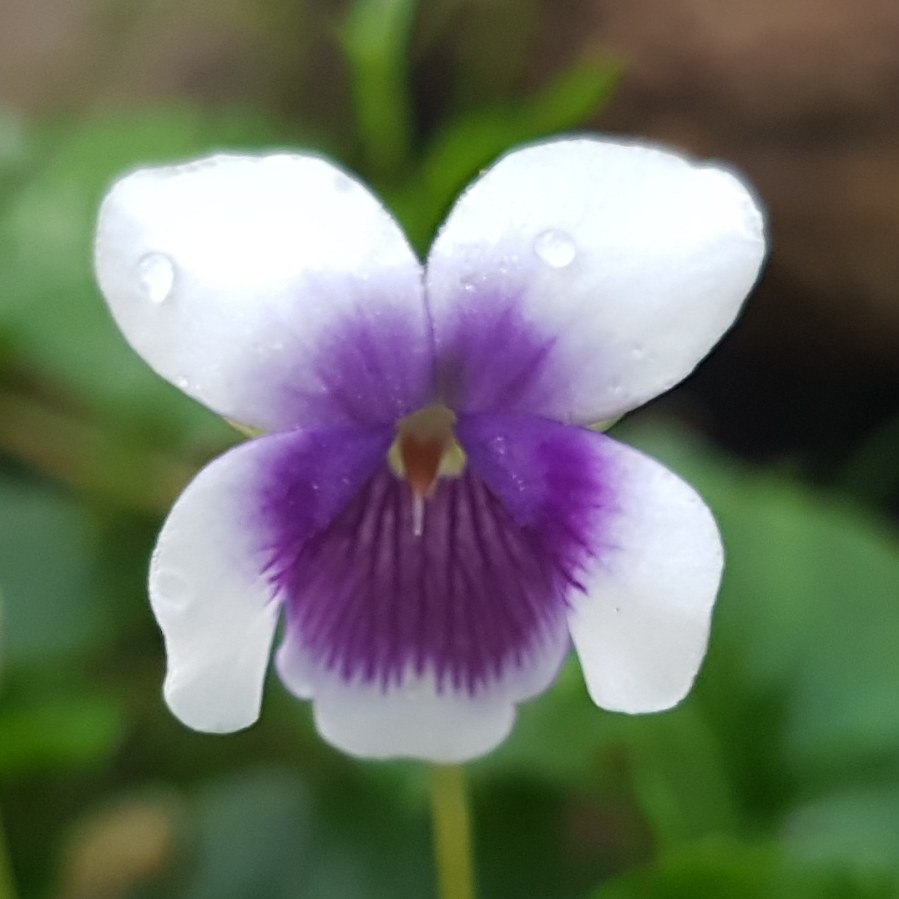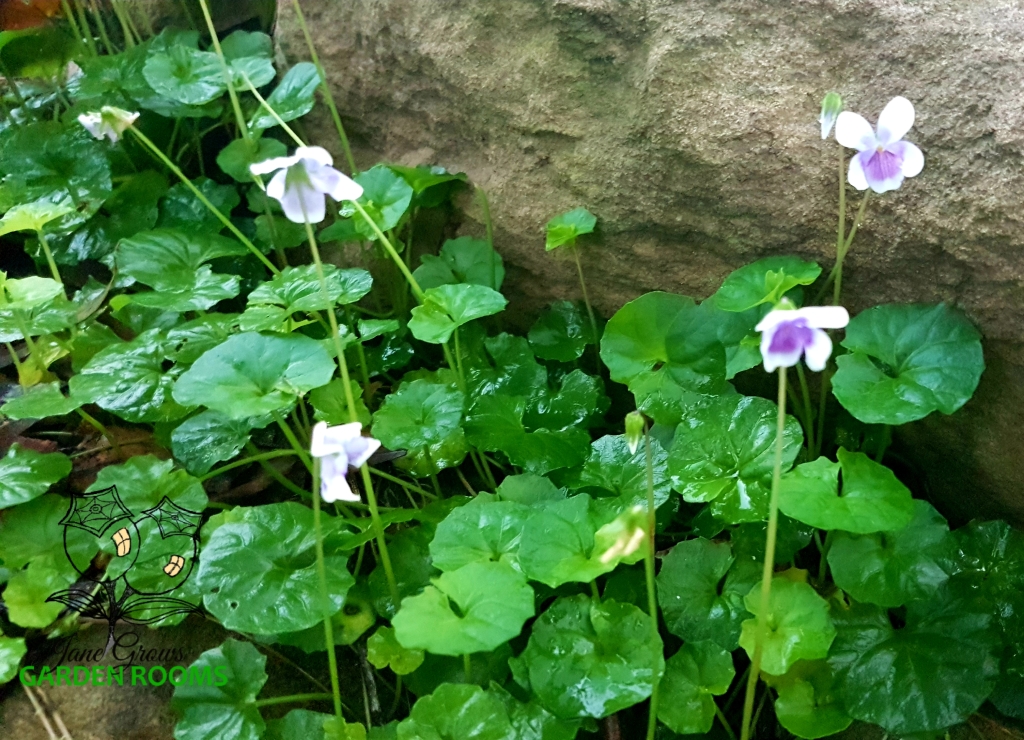
Also known as:
- Viola hederacea (Not the same plant, as explained later)
- Australian Violet
Growing conditions:
- Shade/part shade (some sources advocate full sun, but this plant has not survived in full sun in my garden)
- Tolerant of most soils but prefers moist site
- Will tolerate boggy sites
- Will tolerate light foot traffic
- Tolerant of light frost
Propagation:
- Layering
- Separating runners from established plants
I love this delightful little groundcover. Whether it’s scrambling through my rockery, tumbling out of a hanging pot or trailing along the ground from my frog hotel, it’s always a source of delight. Its tiny flowers stand up amongst lush green kidney shaped leaves and both bloom and foliage look great in a salad. Like most Violas they are completely edible from root to bloom.
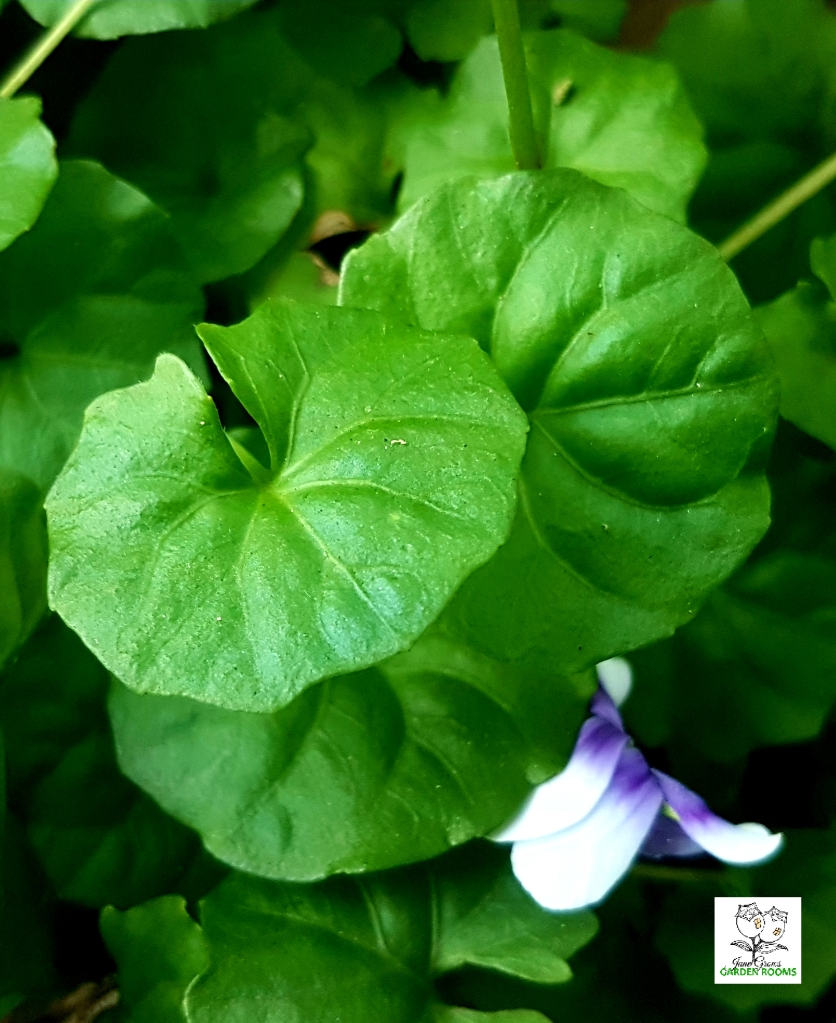
In the process of researching for this post I discovered that despite being labelled as Viola hederacea, most Native Violets sold in nurseries are in fact Viola banksii. The distinction between species is a relatively recent one in botanical terms. They weren’t described as two different species until 2004.
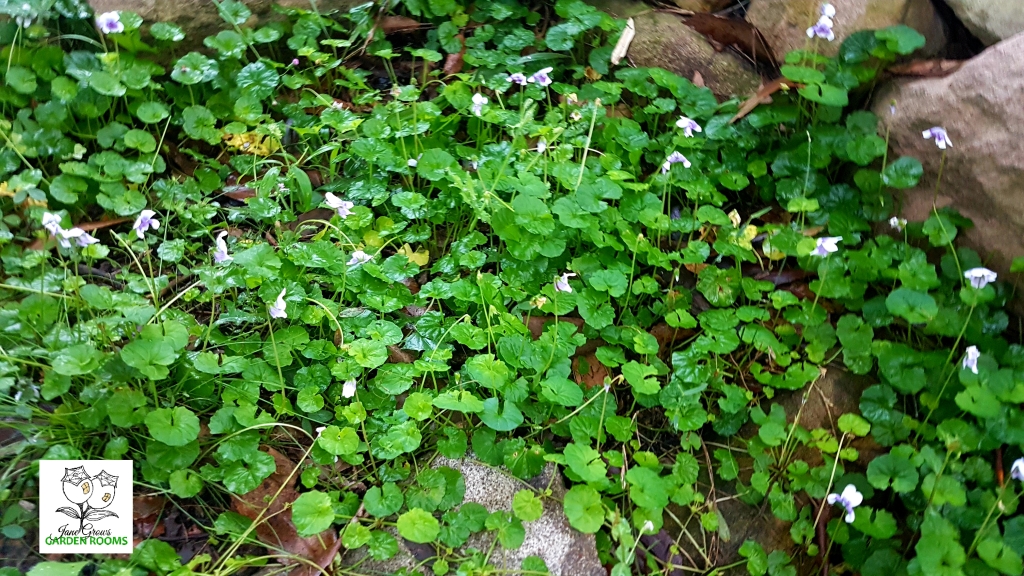
As this species tolerates light foot traffic I am growing it on the steps in one of my rockeries near a bird bath. The birds tend to splash a lot which ensures that the steps get regular moisture. The experiment has been a resounding success. During the drought it grew slowly, but held on as this hardy little native tends to do. With more rain this season it is thriving and has spread along the step and through the rocks. This habit offers a pleasing visage and shows off the lovely green leaves against the pale sandstone rocks. We don’t use the steps much, but there’s little evidence when we do and it is competing healthily with the weeds making it relatively low maintenance. The site gets dappled shade for most of the day from a Soap Tree which prevents moisture loss.
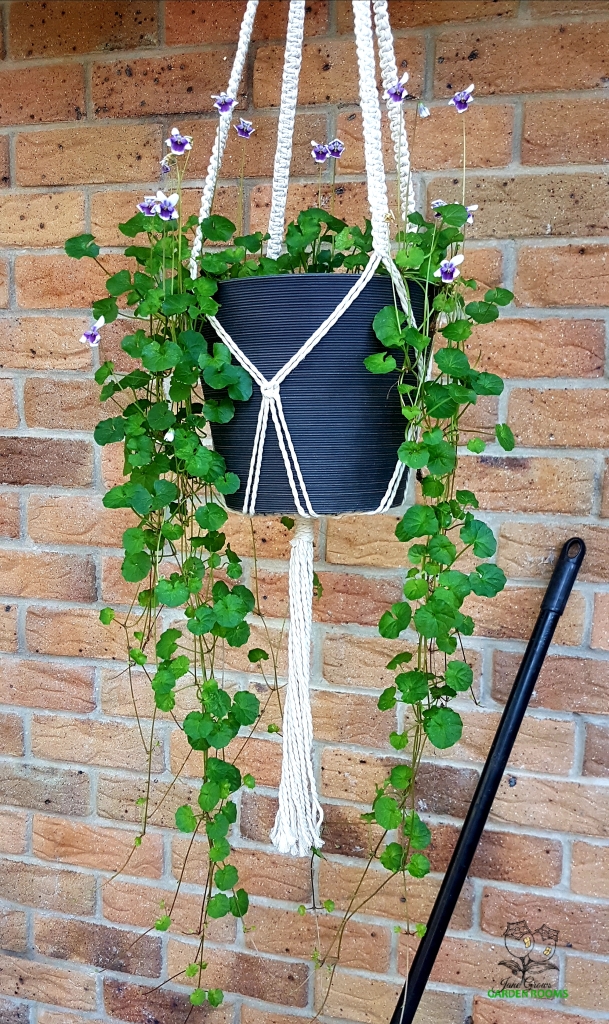
I also grow it in a hanging pot by my front door. This pot was inside the house, but my house is generally dark and it didn’t thrive. I believe it would grow quite well indoors in a bright spot provided the soil was kept moist. This plant tolerates over watering quite well.
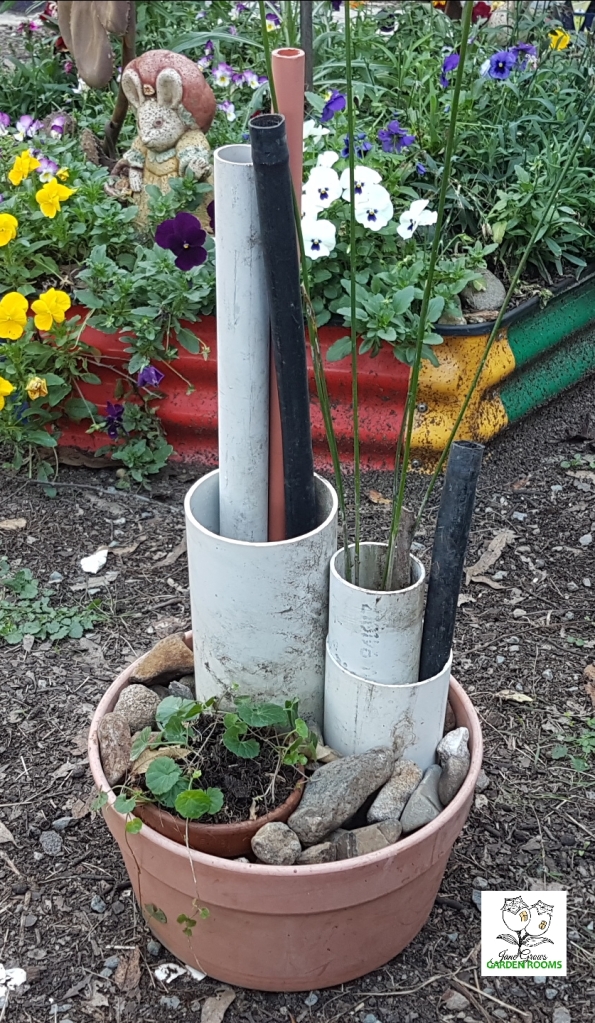
I chose a Native Violet for my frog hotel which has a dangling set of leaves that look pretty, but the leaves tend to die off in the pot. This makes the hotel itself less leafy so I will find an alternative plant to give shelter to my amphibious friends. The Native Violet dangling down will remain as a ladder for small frogs like the Eastern Sedge Frogs (Litoria fallax).
Wishing you lush, green, edible groundcover,
Jane Grows Garden Rooms
PS This plant is on my Ten Australian Bush Food Plants for Your Garden list. Click here to read the full article.
